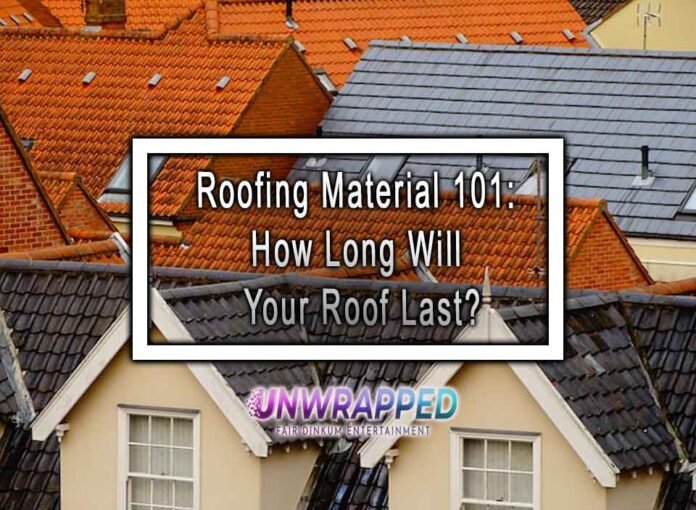As the primary shield against the weather and other elements, roofs are necessarily durable. However, they do have a limited lifespan. Older roofs, especially, need particular attention.
This article will delve into the average lifespan of common roofing materials and signs that indicate you may need to contact a roofing solutions provider.
The Average Lifespan of Common Roofing Materials
Below, you will find a rundown of the average lifespan of the most common roofing materials.
1. Asphalt Shingles
Asphalt shingles are popular because they provide adequate protection without costing as much as other roofing options. Their downside is that they degrade relatively faster than other roofing alternatives and may need significant repairs or a roof replacement anytime between 15 and 30 years.
2. Clay Tiles
Clay tiles can endure freeze-thaw cycles without damage, are resistant to rot and are virtually insusceptible to pests and other environmental damage. However, they are vulnerable to impact damage, so regular inspection is crucial to ensure longevity.
Clay tiles may last you a good 50 years before they need to be replaced. With regular maintenance, they may last up to 100 years.
3. Concrete Tiles
Concrete tiles are versatile roofing materials; they’re also less expensive than clay tiles. However, they are heavier than clay, so a regular check of their supports is necessary.
Concrete tiles may last up to 50 years before they need replacing. With regular roof maintenance, they may last even longer (say, 75 years).
4. Copper Roof
Copper roofs are attractive, and they have superior corrosion and rust resistance. It is also one of the most durable materials available, lasting 60 to 100 years or even longer. However, they may be vulnerable to temperature fluctuation damage, so they must be inspected regularly to ensure longevity.
5. Metal or Tin Roof
Also known as corrugated iron, tin roof refers to any metal roof, typically made of steel, e.g., steel roof and galvanised steel roof. It is not made of iron, and it is rare for metal roofs today to actually contain tin.
When properly installed and maintained, steel roofs can last between 40 and 70 years. This is why it’s a popular choice for commercial roofs. Corrosion is their main enemy, so homeowners and business owners in coastal regions should be especially diligent in maintaining their steel roofing.
6. Slate Shingles
Slate shingles are very durable. Harder slate roofs have a lifespan of 150 to 200 years, while softer slates can last from 75 to 90 years. With regular maintenance, slate roofs may not need to be replaced for two lifetimes.
Signs Your Roof Needs Repair, Replacement or Maintenance
The following are signs that your roof may need maintaining, repairing or replacing.
1. Missing Tiles or Shingles
Pieces of tiles and shingles may go missing over time, and that is normal. They can blow off, become dislodged, or get damaged by hailstone impact. However, you must promptly replace missing tiles and shingles to prevent roof and collateral damage.
2. Curling or Buckling
When the shingle edges are curling up or when your shingles seem like they’re being pushed upward from underneath (i.e., buckled or raised in the middle), it’s an indication they’re nearing the end of their lifespan.
3. Particles in Downspouts
If you see small, gritty particles in your gutters and downspouts, that may indicate shedding. A dull, faded or worn-out appearance may also indicate granular loss. Asphalt shingles are particularly susceptible to particle shedding.
4. Water Damage on the Ceiling
Water stains, dampness, or mould growth on your ceiling could indicate water pooling on your roof and leaking into your house. There may also be damage to the roof flashing; if the flashing is cracked or broken, water can penetrate the roof.
5. Sagging
A sagging roof is a serious issue. If you notice a dip in your roof, it could mean underlying damage, possibly to the decking or the roof supports.
6. Rusted or Damaged Gutters and Downspouts
When gutters and downspouts are rusted, it may mean water is not being effectively channelled away from your home, which may also mean water could be pooling on or underneath your roof.
7. Energy Bill Spike
A sudden increase in your energy bill may indicate that your roof isn’t insulating your home as effectively as before.
8. Unusual Sounds
Creaking, cracking, or popping sounds, especially after severe weather, may indicate structural changes or damage to your roof.
9. Excessive Moss or Algae Growth
While moss and algae are more of a cosmetic issue, these can trap moisture against the roof, potentially leading to damage. If not addressed, it may reduce the lifespan of your roof.
Roof Inspections Are Key
When your roof is over 20 years old, no matter what material it is made of, have it thoroughly checked to see if you need major repairs or maybe even a partial or total roof replacement.
In fact, it’s a great practice to have your roof inspected at least twice a year.
With regular roof inspection, you can maximize the lifespan of your roofing material.










